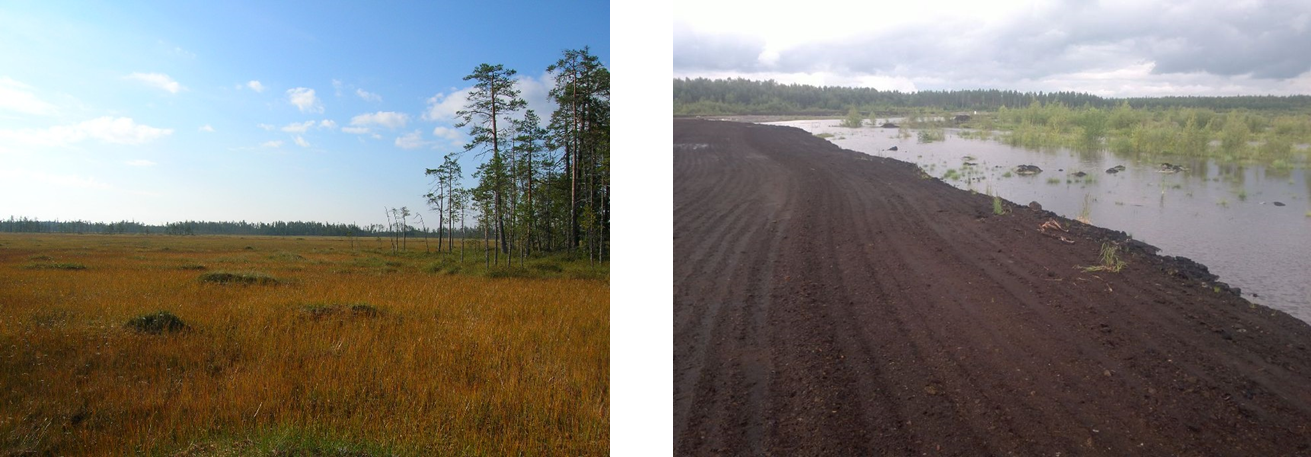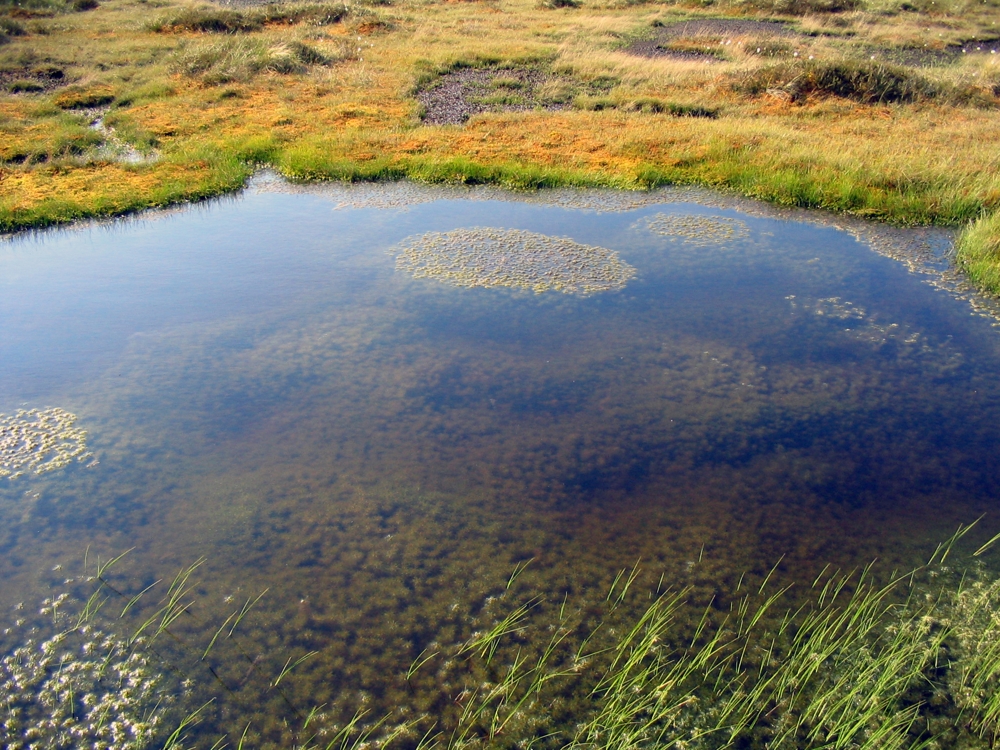![]() Context
Context
Finnish peatlands cover about a third of the total land area of the country. About half is in forestry use and about a third is excluded from any commercial use. Peat provides 5-7 % of the country’s annual energy production. Over the last decades, the general debate on peat production has strengthened in Finland, and industrial peat extraction has led to local conflicts between peat mining and nature conservation, mainly due to the impacts of drainage water on water quality. Large-scale removal of peat has also a major effect on biodiversity and nature values.
The Viurusuo mire area is located near the town of Outokumpu in Eastern Finland. The Finnish Ministry of Trade and Industry and the Ministry of Forestry and Agriculture agreed in 1978 that the area was to be used for peat mining despite the high biodiversity values identified. Yet, peat extraction was never begun and, after a long process involving various conflicts, the Finnish government decided in 2012 to buy the Viurusuo area from the Finnish energy company VAPO Ltd in order to protect the area.
This case study focuses on the policy process (years 1978-2012) which finally resulted in the protection of the area originally reserved for peat extraction. The main stakeholders involved in this case are: national and local policy makers; energy producers and industry; NGO’s; experts from research institutes; and local people in various roles (e.g. land-owners and residents).

Main argumentation
In total 62 individual arguments were identified, covering both sides supporting either nature conservation or peat extraction of the Viurusuo area.
Local people presented the highest number of arguments whereas other stakeholders presented clearly fewer arguments. All the arguments by local residents and land owners were against peat extraction with the basic themes: 1) Economic arguments, 2) Public interest, 3) Uncertainties, risks, mistrust in technology and expertise, 4) Natural water areas (lakes, ponds and springs), 5) Dust, 6) Drinking water / wells, 7) Landscape, soundscape, and scentscape, 8) Biodiversity (biotype, species), 9) Climate change, 10) Recreation, 11) Timescales, 12) Spatial scales, 13) Mental and health values, 14) Untouched landscapes, 15) Educational and historical values, and 16) Abstract nature values.
Representatives of the local and regional nature conservation groups shared similar concerns with the local people. Regarding water areas, the regional NGO placed ecological perspective ahead of recreation. The regional NGO also raised the concern of climate change during the latter part of the long policy process. Further, the arguments by the regional actors more often relied on science than the arguments by local environmentalists; the latter actually resembled the general concerns by the ordinary local people.
The arguments by the energy company VAPO have constantly appeared as counter arguments to the arguments by other stakeholders. They have solely been pro peat extraction: 1) Peat must be extracted because, in economic terms, the Viurusuo area is important for the VAPO Ltd, 2) It is appropriate to extract peat from Viurusuo, 3) It is questionable that Viurusuo holds any specific nature values, 3) The mining project will not considerably harm the ponds, 4) The mining project will not harm water areas, 5) There are no endangered species in Viurusuo, 5) Viurusuo area is too small-scale to be protected, 6) Viurusuo area does not offer anything significant for research, and 7) Viurusuo is not a special habitat for birds.
Framing
The legislative framing of the Viurusuo case changed fundamentally during the policy process due to the amendment of legislation. Nature values were identified already in the early stages of the Viurusuo case by all the stakeholders. Legal institutions, however, were not able to process broad nature values, because legislation recognised only individual species or biotypes as targets for protection. Later on, the overall nature values appeared to be the major legal argument for protection.
Processes
The arguments by local people and the NGOs did not change much during the time. Also the argumentation by the energy company VAPO persisted unaltered through the time. The company only aimed to make changes in the applications for water permit, e.g. by demarcating the ponds from the peat extraction area.
Effectiveness
The rules of the game have ultimately been determined by the scope of legislation and by the courts’ interpretations of this conflictual case. Overall, the court decisions rolled around the water areas. Ponds situated in the middle of the Viurusuo area were strongly at the focus throughout the process. Also biodiversity and the existence of endangered species were discussed and evaluated in the judicial process.
The local people’s arguments about recreation and mental values hold, in practical terms, no significance. Yet, they were effective in keeping the discussion on nature protection active. Local people and the NGO’s were very resilient in making appeals, responses and reclamations for over ten years. Basically, local people spoke strongly for the importance of outside experts as they thought that local concerns were not effective in conserving the mire area.
The final statements by the energy company VAPO and the Finnish government in the moment Viurusuo was sold (i.e. protected) revealed that overall nature values were considered crucial. Nine different reasons can be found: 1) This peat mining project is against public interest, 2) the project will risk biodiversity, 3) the project will destroy habitats, 4) the virginity of nature will be destroyed, 5) the Viurusuo area holds endangered species, 6) Viurusuo holds endangered biotopes, 7) the project will destroy the landscape, 8) the protection of Viurusuo is a part of national conservation objectives of mires, and 9) Viurusuo provides an ensemble of nature values.
Lessons learned
- The overall nature values were the basic reason for the protection of the area.
- No particular species were behind the saving of the Viurusuo area.
- The protection of the area was also not specifically because of arguments about water, whether the value of natural water bodies or the threat of water eutrophication.
- In earlier decades, the legislation recognised only individual species or biotypes as the targets for protection and, therefore, the arguments emphasising broad nature values were not effective.
- Later on, due to the changes in society followed by changes in legislation, the overall nature values appeared to be the major legal argument for protection.
Looking for more information on effective arguments for biodiversity?
For more BESAFE results, including separate briefs focusing on other case studies and various aspects of argumentation, see http://www.besafe.pensoft.net [ref BESAFE toolkit].
This brief is a result of research carried out under the BESAFE project. This brief was written by Professor Pekka Jokinen and Dr. Outi Ratamäki. The full report is available on www.besafe.pensoft.net
The BESAFE project is an interdisciplinary research project funded under the European Community’s Seventh Framework Programme, contract number: 282743.
